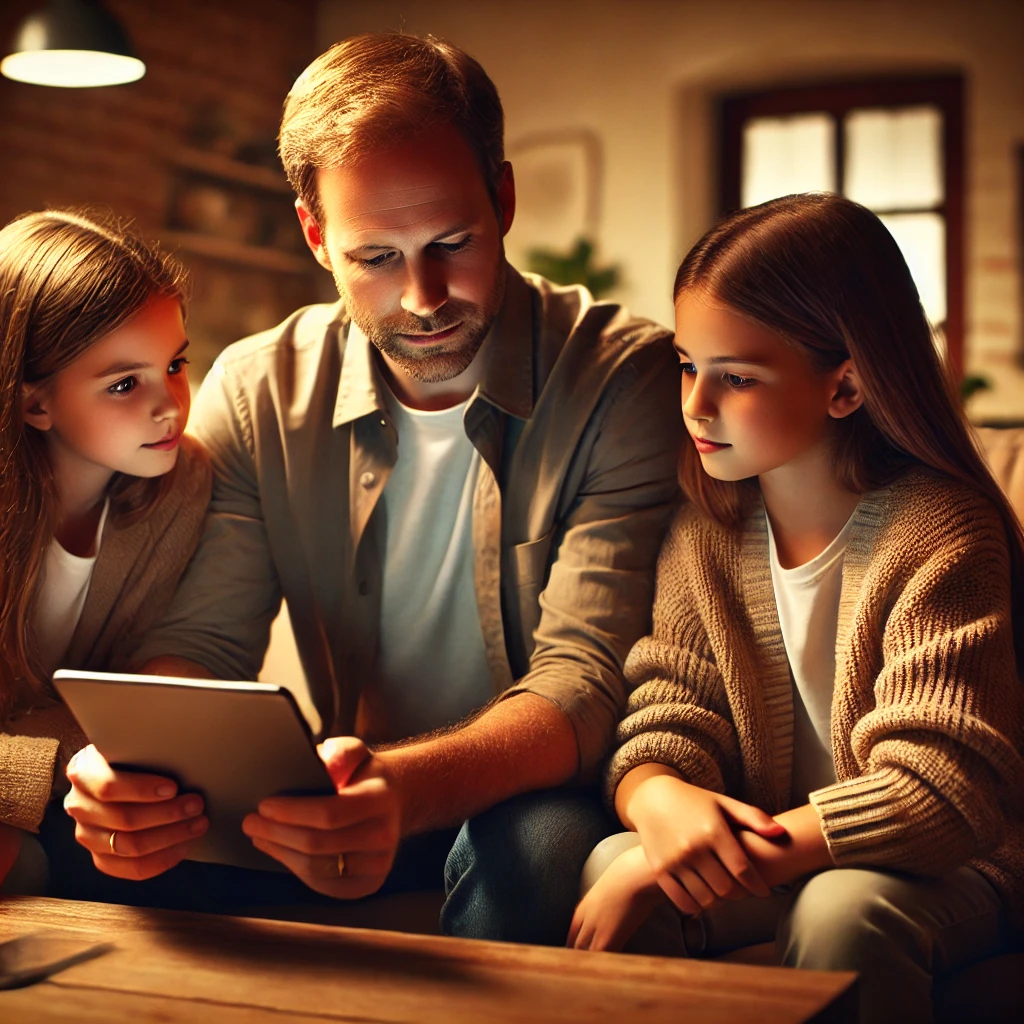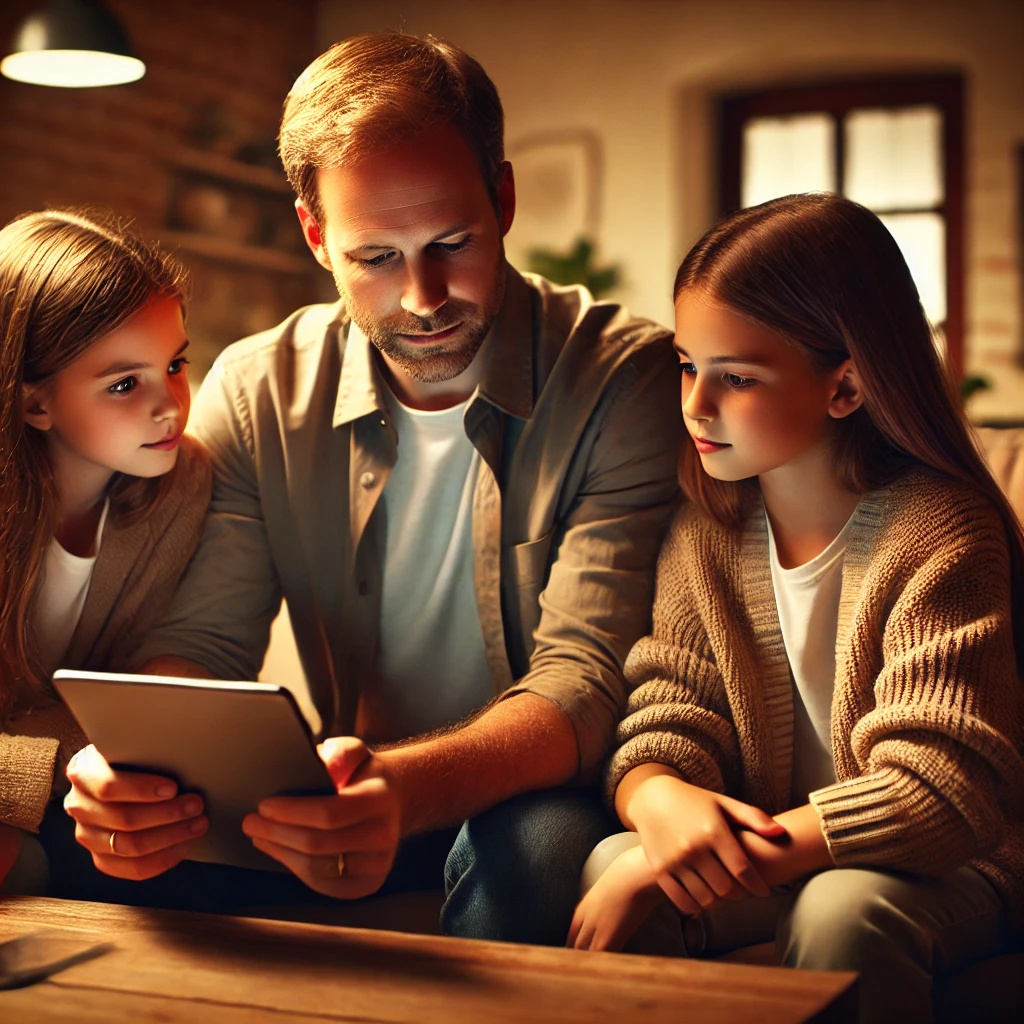
Introduction: The Digital Age Dilemma
Social media has transformed how we connect, but as a parent, I can’t help but wonder—at what cost? I have two daughters, ages 12 and 7, and I’m already thinking about how these platforms will shape their self-esteem, friendships, and mental health as they grow up in a hyperconnected world.
A systematic review published in the Journal of Medical Internet Research (JMIR, 2021) dives into this very issue. It highlights the concerning links between social media use, anxiety, and depression—especially in young people. This aligns with research from Jonathan Haidt’s latest book, The Anxious Generation (Amazon link), where he argues that the rise of smartphones and social media has led to an unprecedented mental health crisis among kids and teens.
As a dad, business leader, and tech advocate, I know the power of digital tools, but I also see the need for balance.
Key Findings: The Link Between Social Media and Mental Health
The JMIR study identifies several ways social media negatively impacts mental health, particularly among kids and teens:
- Increased Anxiety and Depression – Frequent social media use is linked to higher levels of anxiety and depression, especially in adolescents.
- Negative Social Comparison – Seeing picture-perfect highlights of other people’s lives can lead to feelings of inadequacy and low self-worth.
- Cyberbullying – Online harassment is a significant issue, with victims experiencing stress, anxiety, and even long-term emotional trauma.
- Sleep Disruptions – Blue light exposure and late-night scrolling interfere with sleep, which is critical for mental and physical well-being.
Jonathan Haidt’s research in The Anxious Generation suggests that the real shift began in the early 2010s, when smartphones and social media became ubiquitous among preteens. His analysis of global mental health trends reveals a sharp rise in depression, self-harm, and suicide rates among adolescents—especially girls—coinciding with this shift.
How Social Media Affects Mental Health (and Why It Worries Me as a Parent)
1. The Social Comparison Trap
I see this happening already. My 12-year-old is at the age where she’s noticing influencers, fashion trends, and the ever-changing definition of “cool.” Social comparison is nothing new, but social media amplifies it 24/7. A study published in JAMA Pediatrics (link) found that teens who spend more time on social media report lower self-esteem and greater body dissatisfaction.
2. Cyberbullying and Online Harassment
As much as I want to believe my daughters will always be surrounded by kind people, the reality is that social media can be ruthless. Unlike playground bullying, cyberbullying is relentless—it follows kids home, popping up in messages and comment sections.
According to the Pew Research Center (link), 59% of U.S. teens have experienced some form of cyberbullying, with girls being more likely to be targeted. Victims report higher rates of anxiety, depression, and suicidal thoughts.
3. Doomscrolling and Mental Fatigue
Even as an adult, I catch myself mindlessly scrolling through negative news and heated debates. It’s exhausting. Now imagine a child, with an underdeveloped ability to filter what’s real, important, or even healthy to consume. Research from the American Psychological Association (APA) suggests that doomscrolling increases chronic stress levels and contributes to feelings of helplessness.
Strategies for a Healthier Social Media Experience (For My Kids and Yours)
I’m not naive—I know I can’t keep my daughters off social media forever. But I can help guide them toward healthy habits. Here’s how I’m thinking about it:
- Set Time Limits: Establish clear boundaries for screen time to avoid endless scrolling. Experts recommend no more than two hours of recreational screen time per day for adolescents (AAP).
- Curate a Positive Feed: Encourage following accounts that promote inspiration, education, and positivity.
- Foster Open Conversations: Make social media a topic we talk about regularly, so my daughters feel comfortable sharing concerns.
- Prioritize Face-to-Face Connections: Social media is no substitute for real-life friendships and experiences.
- Teach Digital Literacy: Help kids understand the difference between reality and curated content, so they don’t fall into the comparison trap.
- Encourage Device-Free Time: Haidt’s research suggests that delaying smartphone and social media use until at least age 16 can have profound mental health benefits.
Final Thoughts: The Balancing Act of Raising Kids in a Digital World
Social media is here to stay, and banning it isn’t the answer. But as parents, we need to be proactive in how we approach it. By staying engaged, setting boundaries, and encouraging mindful use, we can help our kids develop a healthier relationship with technology.
What Can We Do Next?
This conversation is far from over. I’d love to hear from other parents, educators, and tech professionals:
- How are you managing your child’s social media use?
- What strategies have worked (or failed) in your home?
- Do you agree with Haidt’s argument that we should delay smartphone and social media use for kids?
Drop a comment below or share your thoughts with me on LinkedIn or Twitter. Let’s work together to make social media healthier for the next generation.














Leave a Comment